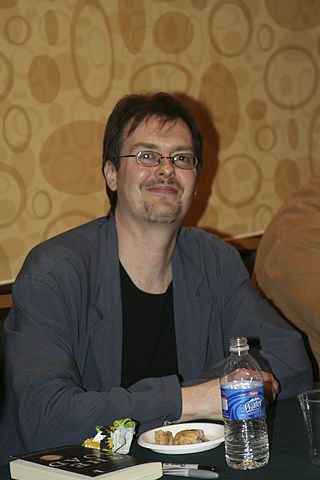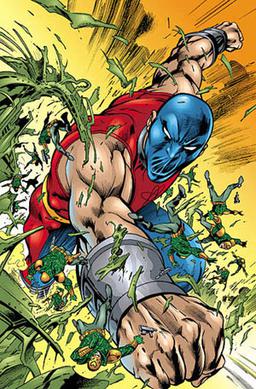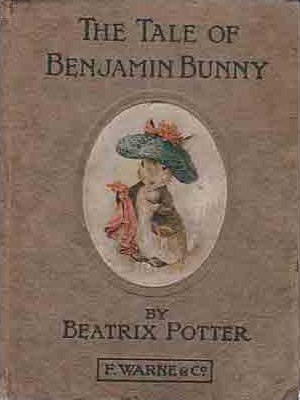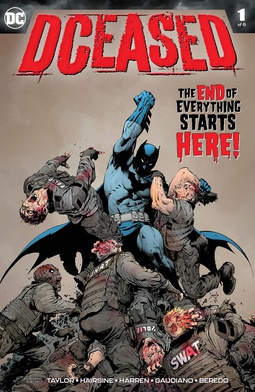
The Justice Society of America (JSA), is a superhero team appearing in American comic books published by DC Comics. It was conceived by editor Sheldon Mayer and writer Gardner Fox during the Golden Age of Comic Books. It first appeared in All Star Comics #3, making it the first team of superheroes in comic books. Its original members were Doctor Fate, Hourman, the Spectre, Sandman, Atom, the Flash, Green Lantern and Hawkman.

Rosemary Sutcliff was an English novelist best known for children's books, especially historical fiction and retellings of myths and legends. Although she was primarily a children's author, some of her novels were specifically written for adults. In a 1986 interview she said, "I would claim that my books are for children of all ages, from nine to ninety."

Solar is an American fictional comic book superhero created by writer Paul S. Newman, editor Matt Murphy, and artist Bob Fujitani. The character first appeared in Doctor Solar, Man of the Atom #1 in 1962 by Gold Key Comics and has since appeared in other incarnations in books published by Valiant Comics in the 1990s, Dark Horse Comics in the 2000s, and Dynamite Entertainment in the 2010s.

Margaret Wise Brown was an American writer of children's books, including Goodnight Moon and The Runaway Bunny, both illustrated by Clement Hurd. She has been called "the laureate of the nursery" for her achievements.

Turok is a fictional character who first appeared in American comic books published by Western Publishing through licensee Dell Comics. He first appeared in Four Color Comics #596. After a second Four Color appearance, the character graduated to his own title – Turok, Son of Stone – published by both Dell and then Gold Key Comics from 1956 to 1982. Subsequently, he appeared in titles published by Valiant Comics, Dark Horse Comics and Dynamite Comics.

Andrew J. Cartmel is a British script editor, author and journalist. He was the script editor of Doctor Who during the Sylvester McCoy era of the show between 1987 and 1989. He has also worked as a script editor on other television series, as a magazine editor, as a comics writer, as a film studies lecturer, and as a novelist.

Albert Rothstein is a superhero appearing in American comic books published by DC Comics. Atom Smasher is known for his power of growth and super strength.

Ibis the Invincible is a fictional character originally published by Fawcett Comics in the 1940s and then by DC Comics beginning in the 1970s. Like many magician superheroes introduced in the Golden Age of Comics, Ibis owes much to the popular comic strip character Mandrake the Magician. A second Ibis, successor of the first, was introduced in 2007.
Roy McKie was an American writer and illustrator of children's books, most notably under the Beginner Books imprint. He illustrated many books penned by Theodor Seuss Geisel under the pen name Theo. LeSieg.

Al Pratt is a fictional character appearing in American comic books published by DC Comics. He is the first character to use the name Atom. He initially had no superpowers and was originally a diminutive college student and later a physicist, usually depicted as a "tough-guy" character. Al Pratt is also the father of Damage and godfather of Atom Smasher.
Marjorie Weinman Sharmat was an American children's writer. She wrote more than 130 books for children and teens and her books have been translated into several languages. They have won awards including Book of the Year by the Library of Congress or have become selections by the Literary Guild.
The Lewis Carroll Shelf Award was an American literary award conferred on several books annually by the University of Wisconsin–Madison School of Education annually from 1958 to 1979. Award-winning books were deemed to "belong on the same shelf" as Alice's Adventures in Wonderland and Through the Looking-Glass by Lewis Carroll, having enough of the qualities of his work.
John Alan Maxwell was an American artist known primarily for his book and magazine illustrations, as well as historical paintings. He also was an illustrator for many commercial publications, including Collier's Weekly, The Saturday Evening Post, The Golden Book Magazine, The American Magazine, and Woman's Home Companion.

The Tale of Benjamin Bunny is a children's book written and illustrated by Beatrix Potter, and first published by Frederick Warne & Co. in September 1904. The book is a sequel to The Tale of Peter Rabbit (1902), and tells of Peter's return to Mr. McGregor's garden with his cousin Benjamin to retrieve the clothes he lost there during his previous adventure. In Benjamin Bunny, Potter deepened the rabbit universe she created in Peter Rabbit, and, in doing so, suggested the rabbit world was parallel to the human world but complete and sufficient unto itself.

Fun Home is a musical theatre adaptation of Alison Bechdel's 2006 graphic memoir of the same name, with music by Jeanine Tesori, and book and lyrics by Lisa Kron. The story concerns Bechdel's discovery of her own sexuality, her relationship with her closeted gay father, and her attempts to unlock the mysteries surrounding his life. It is the first Broadway musical with a lesbian protagonist. It is told in a series of non-linear vignettes connected by narration provided by the adult Alison character.

"Convergence" was a weekly comic book storyline published by DC Comics that ran from April 2015 to May 2015. The series consists of an eponymous #0 issue, an eight-issue core miniseries, and 40 two-issue tie-in miniseries. "Convergence" continues from the weekly series Earth 2: World's End and The New 52: Futures End. In the story, Brainiac collects cities and inhabitants from various timelines that have ended and traps them in domes on a planet outside of time and space. He then exposes the domes to one another to see how the characters interact. This event marks the return of DC characters and timelines from before the 2011 "Flashpoint" storyline that led to the creation of The New 52 Universe.

Injustice: Gods Among Us is an American comic book series that serves as the prequel to the fighting video game of the same name. The series takes place in an alternate reality, where Superman descends into villainy following his family's death at the Joker's hands. The Justice League is split by those who put their trust in Superman, establishing the totalitarian One Earth Regime, while Batman forms an insurgency out of the other half of the League to fight back against the Regime.

DCeased is a six-issue comic book miniseries published by DC Comics from May to October 2019. It was created by writer Tom Taylor and the artistic team including penciler Trevor Hairsine and inker Stefano Guadiano. The story takes place in an alternate Earth, where a corrupted version of the Anti-Life Equation has infected most of Earth's inhabitants with a zombie-like virus. Lois Lane acts as the series' narrator, detailing how the events took place over the course of a few weeks.
"The New Golden Age" is a crossover event in DC Comics publications. Written by Geoff Johns, the story follows the Justice Society of America unraveling a mystery following the Golden Age heroes and villains and the untold stories that come with it. The story comprises an eponymous one-shot and the central storyline in the ongoing Justice Society of America, as well as tie-in limited series like Stargirl: The Lost Children, Alan Scott: The Green Lantern, Jay Garrick: The Flash, and Wesley Dodds: The Sandman.













